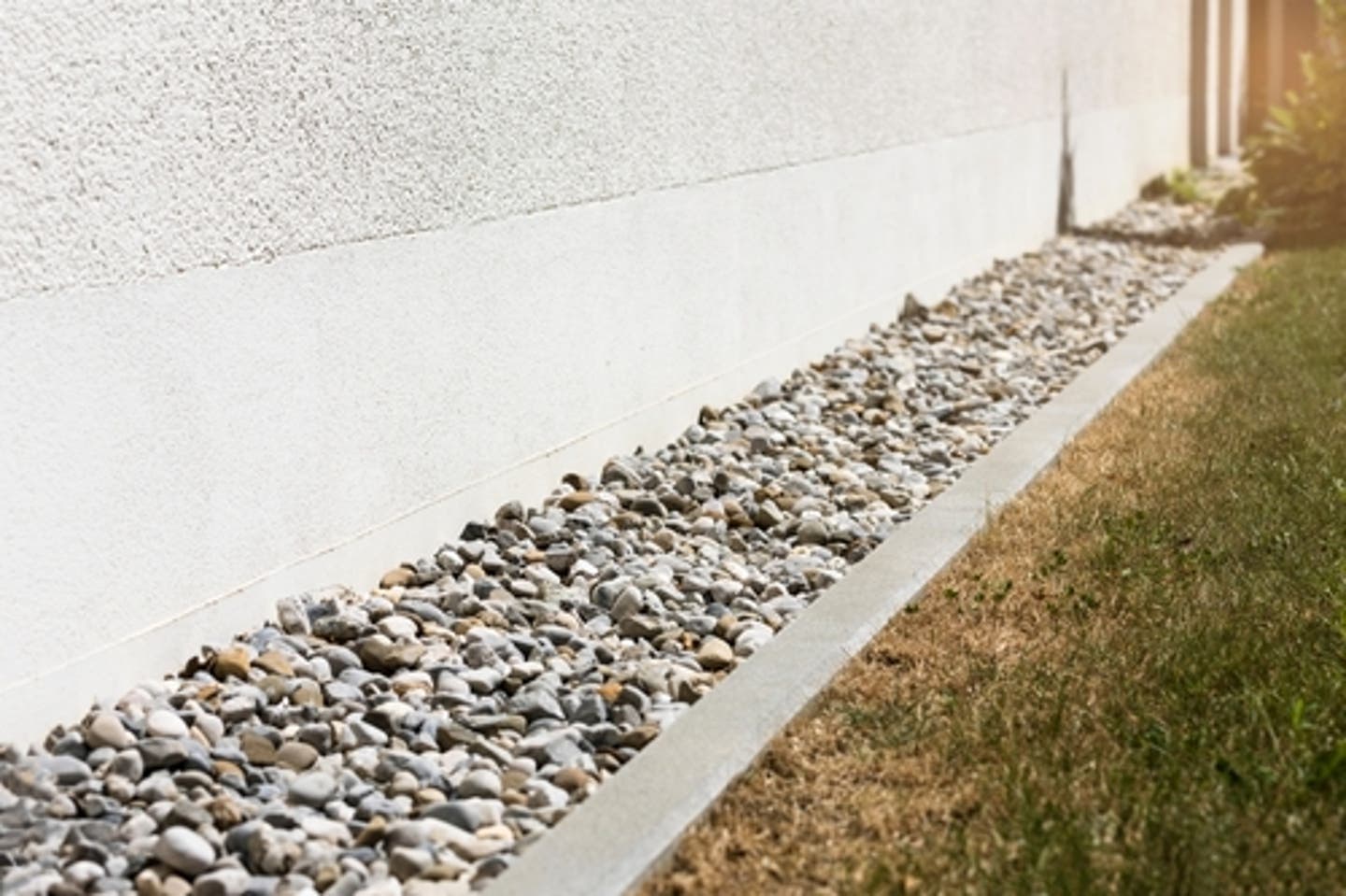
No matter where you live, excessive rain, unexpected storms, internal appliance malfunctions, burst pipes, and more can cause standing water to pool outside and surround your property—with seemingly nowhere to go.
There are a variety of ways to help remove water from your yard, with French drains one of the more popular and effective methods.
What's a French Drain?
A French drain is a trench filled with gravel or loose stones and covered with earth. It draws in water from saturated ground, redirecting surface water and groundwater to protect the foundation of a property by ultimately redirecting the flow of water.
How Does a French Drain Work?
When rain falls or water gathers in your yard, a French drain will route water away into a natural drainage site.
A French drain uses gravity to redirect excess water through a sloped gravel trench, sometimes containing a perforated pipe. Water seeps through the ground into the gravel, and is diverted away to its drainage point. Monthly maintenance keeps the drain clear of debris, leaves, litter, and more.
Considerations for a French Drain
When deciding whether to install a French drain, consider:
- What kind of climate do you live in? Does that necessitate a French drain?
- How common are rain and flooding in your area?
- Is the terrain around your property conducive for a French drain?
- What’s your budget?
French Drains: The Pros and Cons
French drains have some potential advantages and disadvantages:
Pros:
- French drains can last for years, If you regularly perform maintenance and upkeep.
- The material required to install a French drain is inexpensive, making them a popular choice.
- They’re easy to clean. Just flush water through it until any debris is removed.
- They can help waterproof your home, business, or other property’s foundation.
Cons:
- After you dig the trench, you’ll be left with a sizable amount of dirt that will need to be moved or discarded.
- A French drain requires you to dig a trench, so roots, trees, and/or other existing landscaping may be disturbed.
- French drains can be labor-intensive to install, so consider hiring professionals to help with this process.
For Flood Cleanup Assistance, SERVPRO is Available 24/7
Floods can strike without warning, which is one reason why French drains are a popular yard drainage option. But even with advance notice and methods of water removal in place, standing water can accumulate and damage the landscape and your property’s foundation.
If you’re ever faced with a flooding emergency, SERVPRO is Here to Help®. We’re ready to help you throughout the entire water damage restoration process.
Our technicians are committed to returning your property to its pre-loss condition.
To find out more, contact us today or visit our FAQ and Glossary.